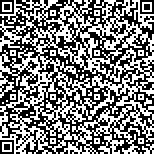下载中心
优秀审稿专家
优秀论文
相关链接
摘要

评估城市发展水平与制定城市规划和城市发展政策息息相关。已有研究表明人口、国内生产总值(GDP)等统计数据和夜间灯光遥感数据能够用来衡量城市发展水平,但大多研究只关注城市发展总量,忽视了发展速度对城市发展的影响。因此,本文基于2012年—2019年Suomi NPP-VIIRS(Suomi National Polar-Orbiting Partnership-Visible Infrared Imaging Radiometer Suite)夜间灯光遥感数据,提出了兼顾城市发展水平和增速的夜间灯光类动能指数用于测度城市发展类动能;利用动态时间规整DTW(Dynamic Time Warping)算法构建了城市发展类动能相似性检测分析框架,并基于相似性检测结果对全国328个城市进行了等级划分。相较于2019年第一财经公布的一至五线城市,本文城市等级划分结果表明,在同一等级中的城市发展更为相似和合理,也证明了城市发展类动能更有利于城市发展水平的评估;以长江三角洲城市群为例,进一步验证了城市发展类动能和基于DTW相似性检测方法用于评估城市群发展情况与合理性的潜力。综上所述,基于夜间灯光遥感的城市发展类动能估算与相似性分析方法能够较好地评估城市发展水平,为城市分级与城市群发展评估提供科学依据。
Urban development assessment is helpful for urban planning and urban development policies. Census, survey, and nighttime light remote sensing data have been widely used to measure the urban development in previous research. However, most studies only focused on the size of urban development in a specific period and few of them have simultaneously considered the size and speed of urban development. A model that considers both the size and speed of urban development is necessary for evaluating the level of urban development, which is a dynamic process.On the basis of the nighttime light data of Suomi NPP-VIIRS from 2012 to 2019, the nighttime light kinetic energy index is proposed to measure the kinetic energy of urban development by considering the size and speed of urban development. Then, the Dynamic Time Warping (DTW) algorithm was utilized to measure the DTW distance using the nighttime light kinetic energy index. Finally, 328 cities in China were classified according to the DTW distance.Numerically, the nighttime light kinetic energy index in most cities increased significantly from 2013 to 2019, especially in the southeast coastal areas and central regions, and that in the northwest area has also increased greatly. In terms of spatial distribution, the original urban agglomerations composed of cities with high night-time lighting kinetic energy index values expanded from 2013 to 2019. The 328 cities were divided into five levels. The classified levels are more comprehensive and reasonable than the city rank released by First Finance in 2019. The Yangtze River Delta urban agglomeration was taken an example to analyze the synergy of urban agglomeration development, revealing that Tongling, Chizhou, and other cities in Anhui province still has a weak connection with the Yangtze River Delta urban agglomeration. The development of a hinterland city (such as Wuhu, Ma'anshan) is recommended to link these cities.

